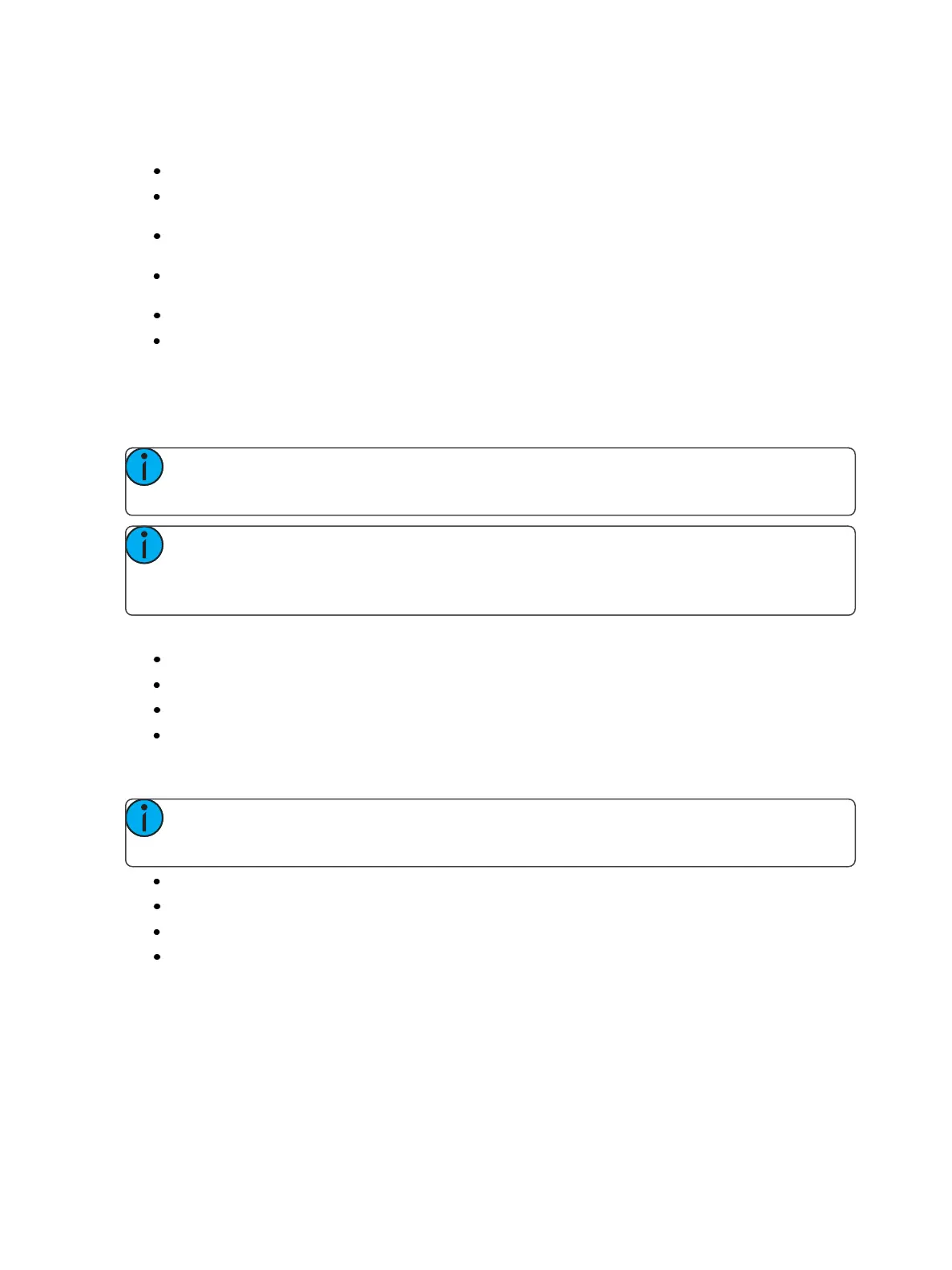440 Eos Family Operations Manual
Once the pixels have been selected, you need to select their fixture type and then assign the starting
address or starting channel.
When either {Starting Channel} or {Starting Address}is selected, both fields will be cleared.
Address-based pixels can not overlap with channel-based pixels. This includes the entire DMX
fixture footprint.
If using {Starting Channel}, any overlapping channel-based pixels will be removed and any
overlapping address-based fixtures will be unpatched.
If using {Starting Address}, any overlapping address-based pixels will be removed and any over-
lapping channel-based fixtures will be unpatched.
When the [Data] key is latched, the address for channel-based pixels will display.
When [Format] is pressed, the address will toggle between port/offset and address number.
By default, the addresses will be organized in rows starting from the left to the right and top to bot-
tom. The edit screen shows a representation of the current mapping. The pixels are color coded
based on if they have been patched or not. A color coding guide is provided on the screen.
Note: Any pixel can have its size adjusted for better representation of the actual fixtures.
This is done by selecting the pixel and then dragging the vertical and/or horizontal borders.
Note: A pixel map can be moved within the edit display by holding down the right mouse
button. The map can be zoomed either by using a mouse wheel or by holding down
[Format] and moving the level wheel.
Options available for changing the mapping:
{Horizontal Order} - toggle state from left to right to right to left
{Vertical Order} - toggle state from top to bottom to bottom to top
{Direction} - toggle state from rows to columns
Click the {Apply} button to see the changes made while still in the edit display.
In the edit display, the softkeys will repaint to the following mapping options:
Note: To see the changes made by using the softkey mapping options, you don't need to
press {Apply}.
{Rotate 90}
{Flip V}
{Flip H}
{Invert}
The {Flash} button can be used to check the address output while still in the edit display. {Flash}
works the same as it does in Live.
When editing is finished, press the {Done} softkey to exit the edit display.
